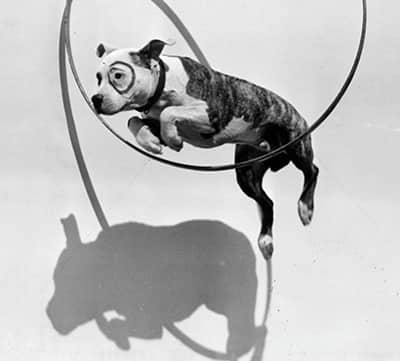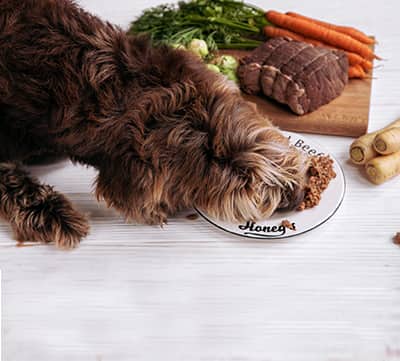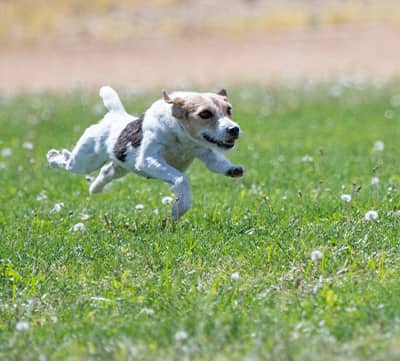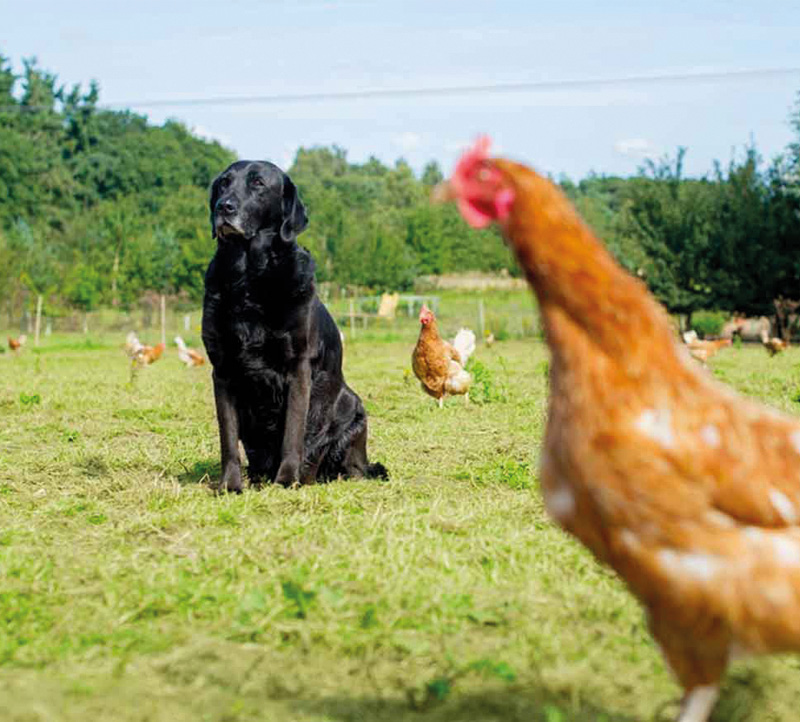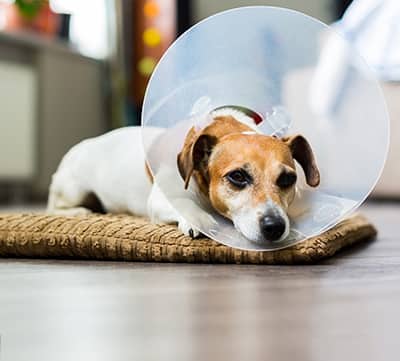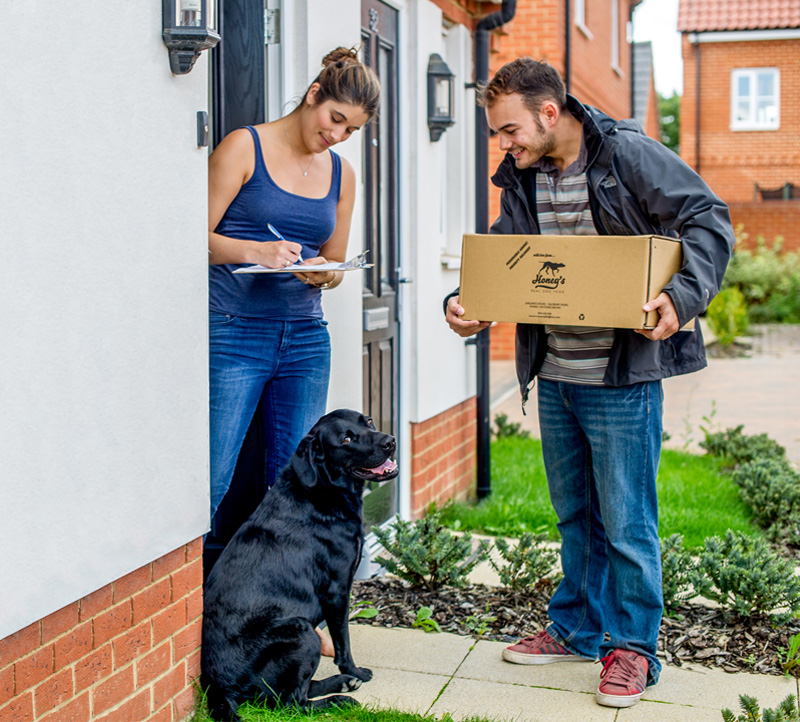A few words about something no one likes to mention
There’s no point in beating about the bush: this article is about your dog’s poo. Why? Because it is an important indicator of your dog’s health.
Before we tackle the nitty-gritty (as it were) of this subject, some good news. Dogs on a raw food diet produce much less excrement, and what little there is of it biodegrades quickly and doesn’t smell.
Normal? What’s normal?
A normal stool should be soft, yet firm. Its colour will be determined by the dog’s diet: anything from a mid-brown to nearly black is usual.
The more meat in the diet, the softer and darker it tends to be. If you want to firm your dog’s stools up, the simplest way is to add bone.
It is normal to find a greyish bag of slime around your dog’s stool from time to time. This is the old mucous membrane, which the intestine sheds every few months. It is also normal to see the remains of vegetables in the stool.
This is vegetable matter the dog hasn’t digested and it helps to stimulate the mechanical function of the intestine.
A reason to be firm
It is important that your dog passes relatively firm (even quite hard) stools on a regular basis. Why? In the area under the tail, dogs have two anal glands. These excrete a particular smell when dogs move their bowels, thus allowing them to mark territory and so identify other dogs.
Dog faeces are normally firm, and the anal glands usually empty when the dog defecates, lubricating the anal opening in the process. When the dog’s stools are soft, they may not exert enough pressure on the glands, which then may fail to empty. This may cause discomfort as the full anal gland pushes on the anus.
If you see a dog pulling its bottom along the floor it could well be because its anal glands are causing it a problem.
Stool guide
- Very dark or black – caused by a high percentage of meat in the diet, especially liver and other offal.
- Greyish – usually the result of eating grain and/or processed food.
- Light-coloured – especially if greyish may be caused by a liver or pancreatic problem, so worth consulting your vet.
- Greasy – when dogs have a pancreatic problem, they are unable to digest fat efficiently. A greasy, sour-smelling stool may be an indication of an underlying pancreatic issue. Discuss with your vet.
- Foamy – could be an infection in the intestine or colon as a result of undigested fat. Again, you should probably discuss with your vet.
- Very hard – if your dog is on a processed food diet then the cause is probably one of the ingredients included to keep the stools firm: it is not unknown for dog food companies to use sawdust for this purpose! If your dog is on a raw food diet, a hard stool is usually the result of a healthy meal of bone.
- Blood in the stool – this may be caused by anything from a parasite (such as a worm) to a stool that is too firm. You should keep a sample (sorry!) to show to your vet. Bear in mind that the blood may not be red. If it is not fresh, it may appear almost black.
Soft and runny stools
A soft, runny or watery stool is not necessarily anything to worry about unless it lasts for several days or is combined with other symptoms (such as blood in the stool or vomiting).
It is normal for stools to be soft, runny or watery when a dog changes diet or eats something that it doesn’t want to digest.
Raw food produces so much less waste
Mogens Eliasen, a raw feeding expert, has published information about the volume of stools compared to the volume of food being eaten.
Meat, offal and animal fat are almost completely digested. The amount of excrement produced will represent between 2 and 7% of the food being eaten.
Fruit and vegetables produce around 30 to 60% waste. Kibble, on the other hand, produces 60 to 80% waste. This is because dogs are able to take a great deal of nutrition from meat, organs and animal fat but not from processed food.
When to worry about diarrhoea
If your dog has diarrhoea for more than three days or if it has diarrhoea one day normal stools for a few days, and then diarrhoea again until it ends up mostly having diarrhoea, then the problem may be worms.
If your dog has diarrhoea together with another symptom, such as blood in the stool, vomiting, fever or a change in behaviour, then you should consult your vet.
Good news for your garden
Naturally fed dogs produce less excrement and what they produce breaks down quickly.
As it has no harmful chemicals in it, it won’t damage your lawn. If you feed your dog raw food there will be fewer chemicals in its urine, too. This will mean that the urine should not damage your grass or turn it yellow.
For more info or advice please get in touch…
Email: info@honeysrealdogfood.com
Call: 01672 620 260
